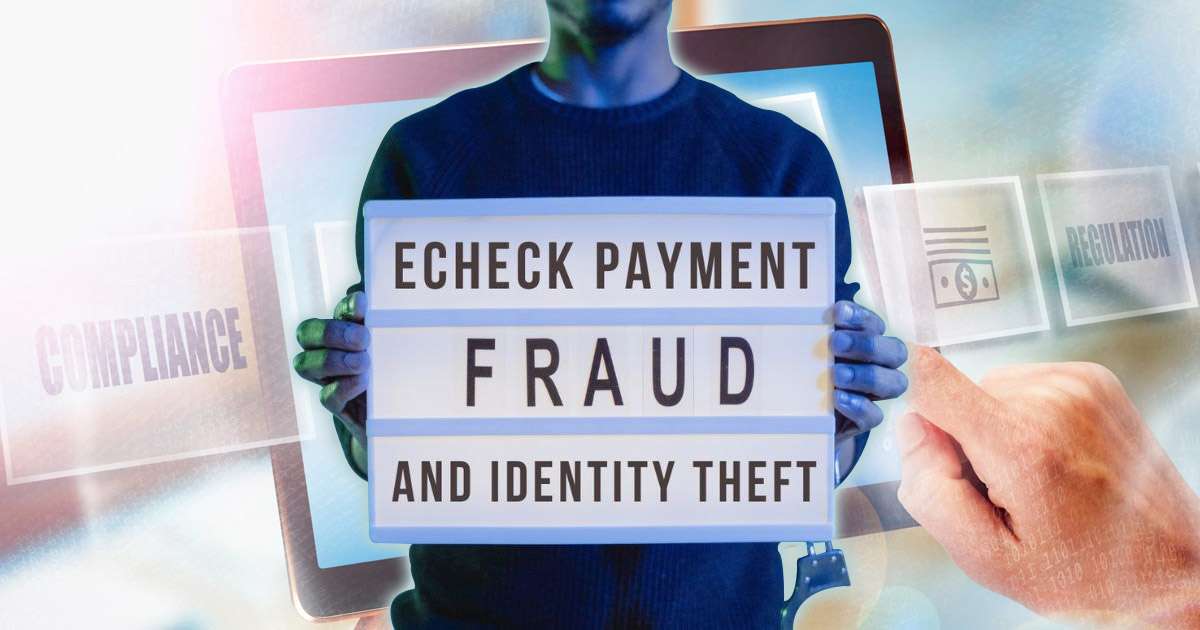Are eChecks Safe or Dangerous? Understanding eCheck Legitimacy

In the digital era, electronic payments have become commonplace, with eChecks being a widely used choice. But with their increasing use, it’s important to ask: are eChecks safe, or can you get scammed with a check? Understanding the potential dangers and benefits of eChecks can help you decide whether to include them as a payment option.
What are eChecks?
An eCheck, or electronic check, is a digital payment method that moves funds from one bank account to another using the Automated Clearing House (ACH) network. Unlike traditional paper checks, which involve physically writing and depositing a check, eChecks are processed electronically. To process an eCheck payment, a customer submits their checking account number, routing number, and authorization online. This data is then managed by the ACH network to complete the transfer.
How do they work?
eChecks operates through a digital infrastructure known as the ACH network. This network acts as an electronic highway, facilitating the movement of funds between accounts. Here’s a simple breakdown of how they work:
- To begin an eCheck payment, the customer permits money to move from their bank account to the merchant’s account. This permission can be granted via an online form or a signed document.
- Once authorization is granted, the merchant gathers the required payment information from the customer, such as the bank account number and routing number.
- The payment processor checks the validity of the details and ensures that the account has sufficient funds. This step helps prevent errors and fraud.
- Once verified, the payment is processed through the ACH network, usually completed within two to three business days. The funds are then deposited into the merchant’s account.
Are they legitimate?
Many people question the legitimacy of eChecks due to concerns about fraud and security. Generally speaking, eChecks are a valid and widely accepted method of payment. They provide a handy way to transfer money without needing a physical check. However, like all payment methods, eChecks have their own set of challenges.
How to tell if eChecks are authentic
To ensure an eCheck is authentic and not a scam, follow these simple steps:
- Confirm the identity of the person or organization issuing the eCheck. Ensure that you have a trusted relationship with the sender and that their contact information matches what you have on file.
- Scrutinize the details provided in the eCheck. Authentic eChecks will include accurate bank account numbers, routing numbers, and authorization information. Cross-check these details with known and verified sources.
- Employ reliable and secure eCheck processing services. Reputable payment processors offer robust fraud detection features that can help identify and prevent fraudulent transactions.
- Regularly review your bank statements and transaction records for any unusual or unauthorized activity. Promptly address any discrepancies with your bank or payment processor.
- Ensure that the eCheck is accompanied by proper authorization, such as a signed contract or an online order confirmation. This helps verify that the transaction has been authorized by the account holder.
- Be cautious of eChecks that come with unusual requests or urgent demands. Scammers often use high-pressure tactics to convince you to process an eCheck quickly. Legitimate transactions typically follow standard procedures and do not involve unusual conditions.
- Many financial institutions and payment processors offer tools to verify the authenticity of eChecks. Utilize these tools to cross-check the details and confirm the legitimacy of the eCheck.
Following these steps can help you feel more confident about the authenticity of eChecks and protect you from potential scams.
How safe are eChecks?
When considering is an eCheck is safe, it’s crucial to understand that eChecks are generally more secure than traditional checks. They benefit from several security features:
- Authentication: The initial step involves verifying that the customer consents to the transaction and that the account information is accurate.
- Digital Signature: eChecks come with a timestamped digital signature, which boosts security and helps guard against fraud.
- Duplicate Detection: The system can detect and alert you to duplicate transactions, reducing the risk of fraud.
- Encryption: eCheck information is encrypted, making it tough for unauthorized users to access or misuse the data.
- Certificate Authorities: These entities manage digital certificates that authenticate the security of the transactions.
Despite these measures, there are still risks involved. Problems with checks like eChecks include potential delays in detecting fraud, especially if the fraudulent activity is sophisticated. It can take weeks for a fake eCheck to be discovered, during which time the scammer might have already disappeared with the funds.
What can you do to make using eChecks safer?
To mitigate the dangers of eChecks and ensure you’re not left vulnerable, consider the following tips:
- Always verify the legitimacy of eCheck transactions before processing. Ensure that all payment details match and that the account has sufficient funds.
- Keep an eye on your bank accounts and transaction history to quickly spot any irregularities or suspicious activities.
- Employ reputable and secure eCheck payment processors that offer robust fraud detection and prevention features.
- Make sure that everyone involved in handling eChecks understands the common scams and best practices for avoiding fraud.
- Consider additional safeguards such as Positive Pay or ACH blocking to further protect against unauthorized transactions.
Should you use eChecks?
Balancing their advantages and potential risks should guide the decision to accept eChecks. eChecks provide greater flexibility in payments and offer a more affordable option compared to traditional methods. Still, one must manage the risks they carry carefully.
If you choose to accept eChecks, integrating them into your payment system can help you tap into a broader market and provide customers with more payment options. Just ensure that you have adequate security measures in place and that you stay vigilant against potential fraud.

